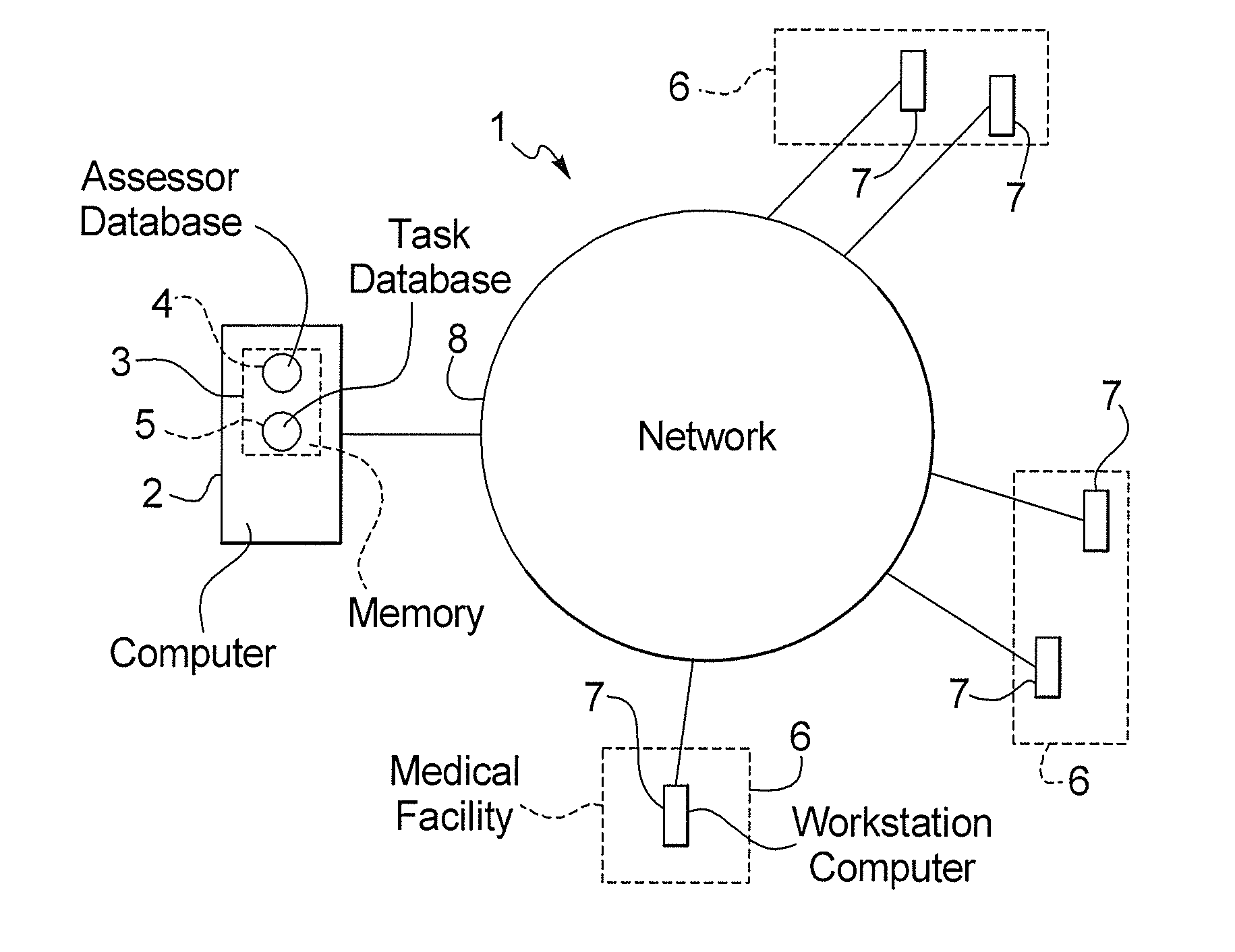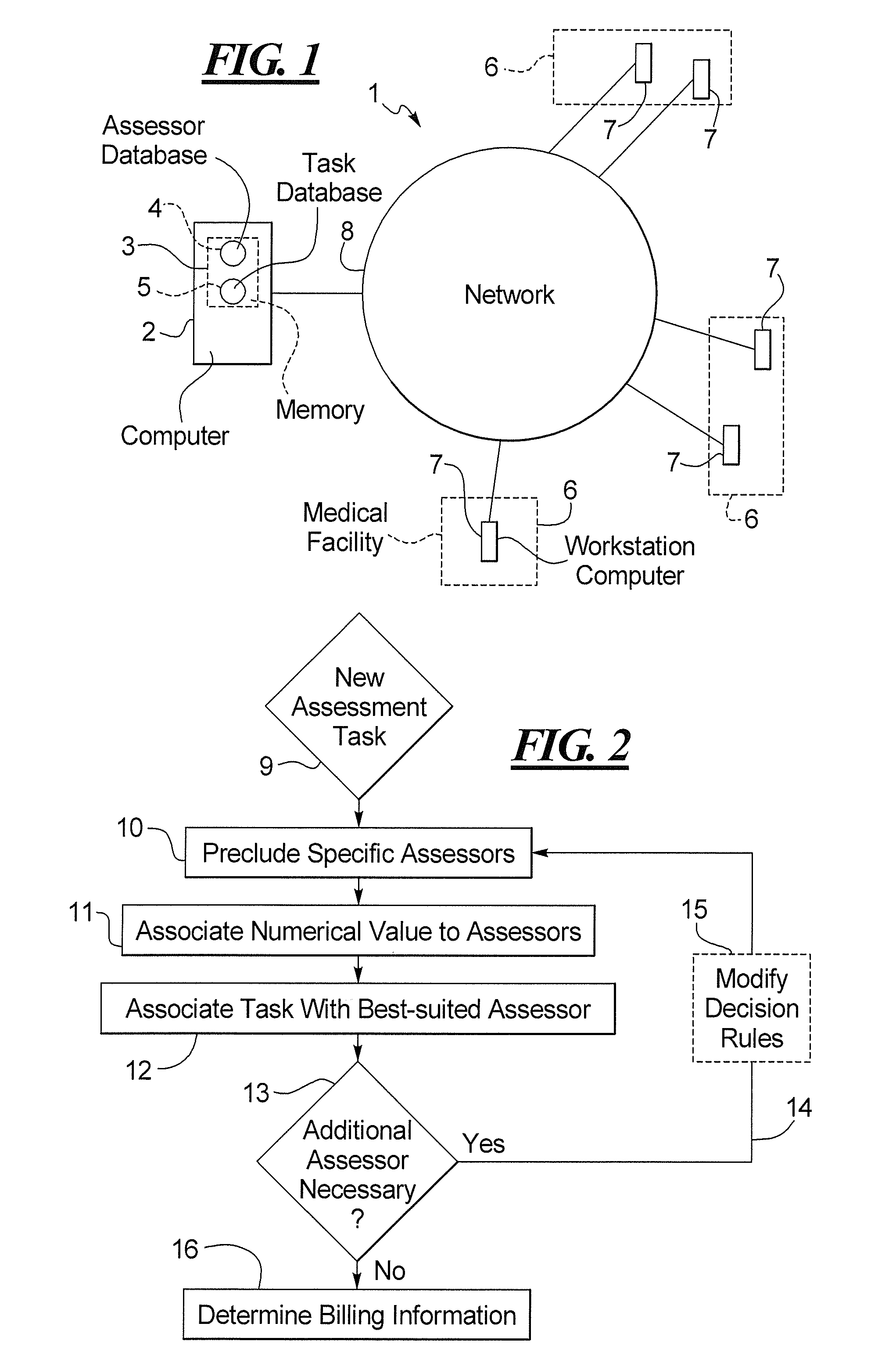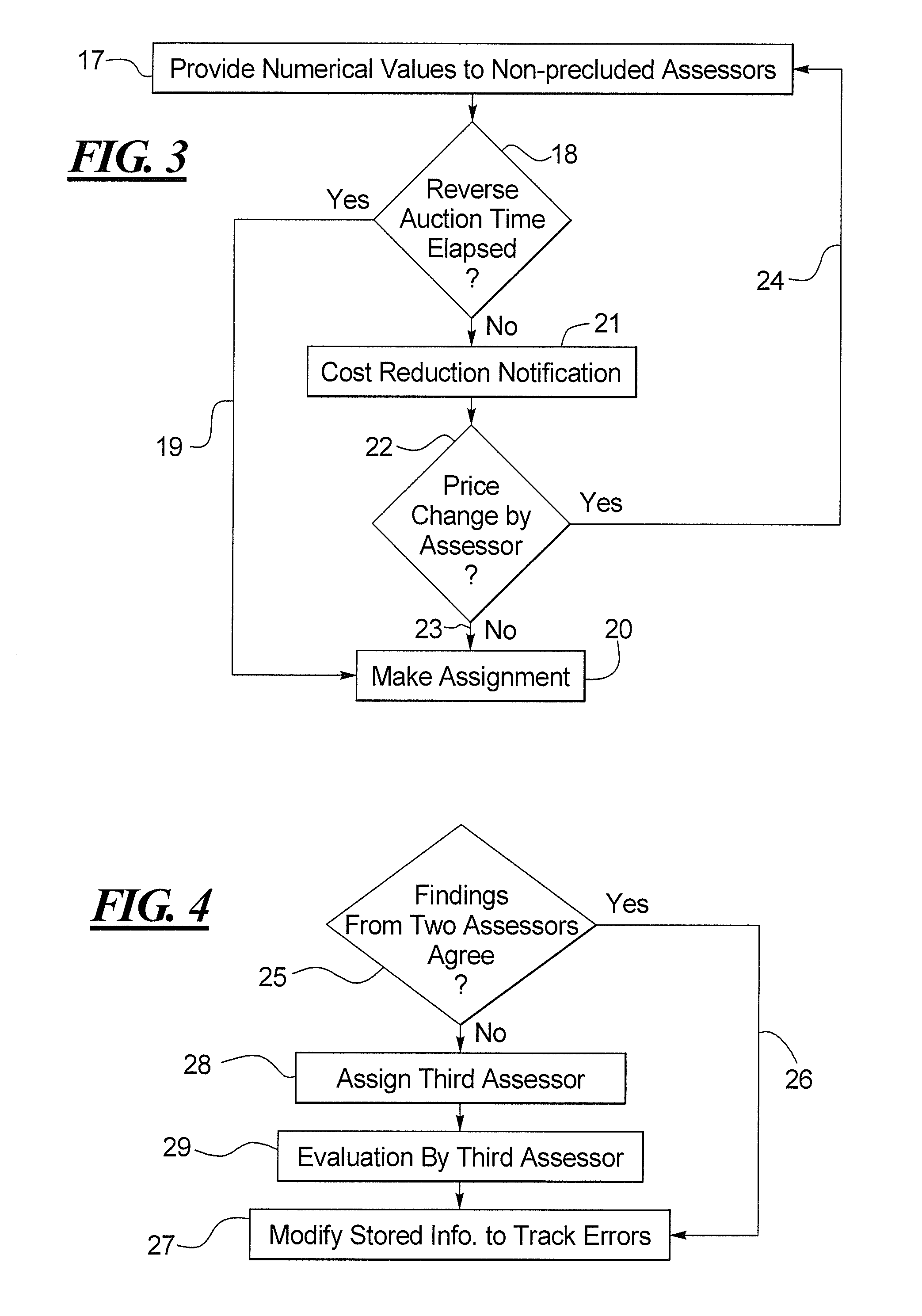Method and system for automatically associating an assessor with a medical assessment task
a technology of automatically associating and assessing tasks, applied in the field of automatic associating assessors with medical assessment tasks, can solve the problems of increasing the difficulty of solving organizational problems, uneven utilization of various assessors, etc., and achieve the effects of flexible and expandable, improved, and cost-effectiv
- Summary
- Abstract
- Description
- Claims
- Application Information
AI Technical Summary
Benefits of technology
Problems solved by technology
Method used
Image
Examples
Embodiment Construction
[0037]FIG. 1 shows an embodiment of a system 1 according to the invention. The system includes a computer 2 (here a central server) in whose memory 3 an assessor database 4 and a task database 5 are stored. The task database 5 is thereby associated with a patient administration system.
[0038]Assessors as well as selection information associated with these are stored in the assessor database 4. Assessment tasks as well as task information associated with these are located in the task database 5. These assessment tasks and their associated task information originate from examinations in various medical facilities 6 that can comprise hospitals and medical practices, for example. The assessment tasks are in particular the evaluation of image data that, for example, were acquired with a computer tomography apparatus or a magnetic resonance device. The computer 2 communicates with the workstation computers 7 of the medical facilities 6 via a network 8, for example the Internet. In the scop...
PUM
 Login to View More
Login to View More Abstract
Description
Claims
Application Information
 Login to View More
Login to View More - R&D
- Intellectual Property
- Life Sciences
- Materials
- Tech Scout
- Unparalleled Data Quality
- Higher Quality Content
- 60% Fewer Hallucinations
Browse by: Latest US Patents, China's latest patents, Technical Efficacy Thesaurus, Application Domain, Technology Topic, Popular Technical Reports.
© 2025 PatSnap. All rights reserved.Legal|Privacy policy|Modern Slavery Act Transparency Statement|Sitemap|About US| Contact US: help@patsnap.com



